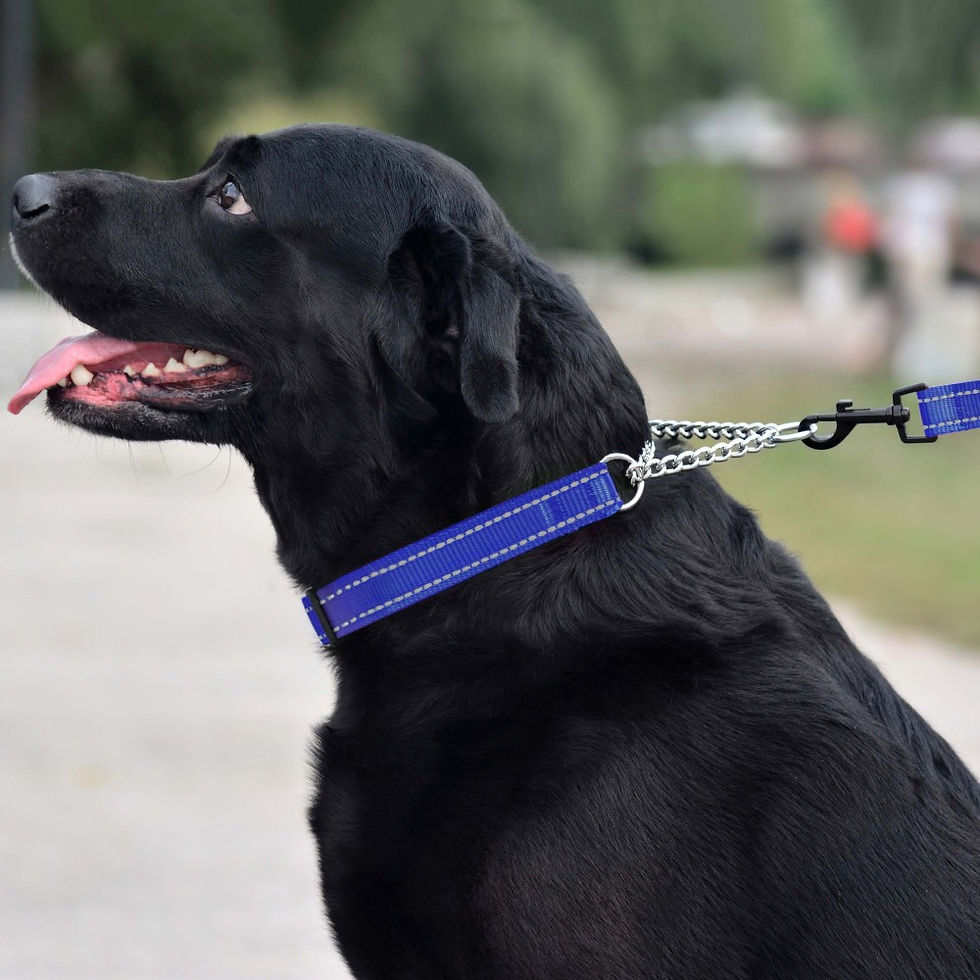Traveling with your dog can bring new fun adventures but if not planned properly, can take you on an unwanted detour. Here are our top 10 travel tips to make your next trip a breeze.
1. Health Check

Your first stop should be a trip to your Veterinarian. Tell your veterinarian where you plan to travel and what adventures you plan on doing. Depending on where you are going your dog may need additional vaccines such as Leptospirosis. Your Veterinarian will also update their core vaccines if needed and complete a head to tail health check. If your dog is on a regular prescription diet or medication you should plan to take at least 1 week additional supply.
2. Gear & Identification

Invest in a sturdy leash and consider using a martingale collar at rest stops. We refer to martingale's as a "safety collar" because when fitted properly dog are unable to slip out of them. A martingale is typically 3/4 fabric and 1/4 chain or fabric. To fit properly, place the collar as high up on the neck as you can and pull on the chain portion. It should create a triangle shape when fitted correctly. It's scary to think about losing your dog while traveling and even more terrifying if they don't have any identification on them. Place your dogs identification on their collar and consider a pet GPS tool.
3. Bag Check
For easy access and organization we like to give our dogs their own luggage. This way we can quickly locate the bag and keep it in an accessible location in the car. Remember to pack: -Collapsible food & water bowl -Proof of vaccinations & health check -Food & Water bottle -Extra collar & leash -Medication -Blanket -Variety of toys -Poop bags -Trash bag, cleaner and paper towels
Check out these bags from Mobile Dog Gear www.overlanddoggear.com
4. First Aid Kit
Your pet first aid kit should remain in your car in case of emergencies or minor accidents. A torn nail or minor cut is a real possibility in everyday life, don't wait until you need it to get it! Read our Pet First Aid blog on how you can create your own.
5. Car Safety

We won't sugar coat it so brace yourself, dogs in a car accident become projectiles and it is fatal. If unrestrained, a 10-pound dog will exert about 500 pounds of force in a collision at 30 MPH. An 80-pound dog will exert around 2,400 pounds of force under the same conditions.
Dog's should always be in the rear of the car, never in the passenger seat or driver's seat, and secured by a dog seat belt device or in a crate which has been secured. Safety first.
6. Crate
Besides being a safe place for your dog in the car, a crate is wonderful to use while at a hotel or other lodging services. Your crate is familiar to your dog, gives them a safe and quiet place to rest while in an unfamiliar environment and gives them a buffer in instances such as when room service arrives.
7. Rest Stops

Plan your rest stops ahead of time to ensure easy access back onto the highway, a clean grassy area to stretch your legs. and accessibility to rest stops for the two-legged traveler too!
8. Toys & Games
Before travelling give your pup plenty of physical and mental exercise. Every dog is different so if your dog is higher energy it could be more beneficial to you to spread out their high intensity exercise over a few days. Pack safe chewing toys to occupy your dog during the longer stretches in the car. Another useful toy is a "licky mat" which you can spread peanut butter on and is sure to busy your pup!
9. Lodging
If you're planning to stay at a hotel or similar lodging, ensuring it is pet friendly unfortunately is not enough. Hotels can have many hidden rules such as; under 25lbs only, pets only in specific rooms, service dogs only and others. Upon arriving to your hotel, have one person check yourselves into the hotel and then bring your dog in. This way 100% of your attention can be on your dog and you won't feel rushed or distracted.
If you are staying with friends or family members, get a sense of any rules or limitations for your dog in their house. Possibly no dogs on the couch or maybe they have a dog of their own who would prefer to not socialize with yours.
10. Daycare
If you plan on doing some shopping, sight seeing or having a night out on the town, research dog daycares in that area who could care for your pup and allow you a little freedom. If your pup is a social butterfly they may prefer an open concept daycare where they can meet new friends. But if your dog takes longer to warm up to new friends they may prefer a kennel type setting or one on one care.
We hope our travel tips have prepared you for a fun adventure with your pup! Wherever your adventure takes you, remember to be safe and have fun!




Comments